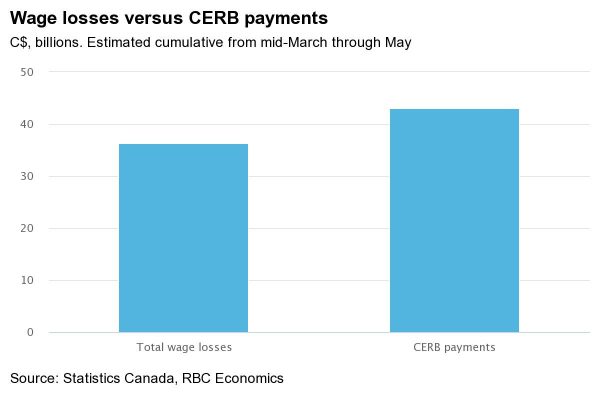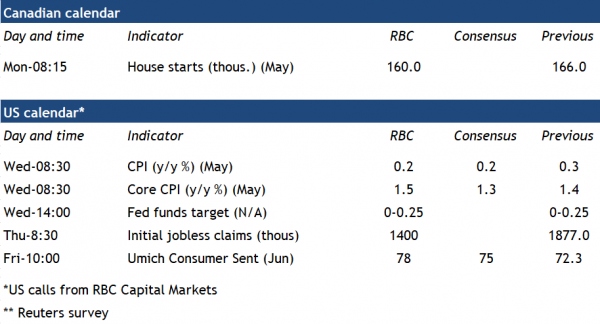The surprise increase in employment in both Canada and the US in May added to a growing list of evidence that economic activity bottomed out in April, albeit after plumbing previously unthinkable depths. The gains themselves were unexpected, given the number of people collecting jobless benefits had continued to increase in both countries. But our own tracking of credit and debit card transactions had already flagged a pickup in spending activity in May.
Though still down significantly from a year ago, Canadian auto sales also rose sharply in May from April according to industry reports. Home resales posted a notable increase in both Toronto and Vancouver. And though we expect May Canadian housing starts to tick lower when they’re reported in the week ahead, that would follow a stronger-than-expected April – and would still leave new home building looking resilient for a sector that is typically much more sensitive to the economic cycle.
Big blow to jobs buffeted by significant government support
Of course, even with a bump up in the May job count, labour market weakness over the last few months has been unprecedented. But so have payments from novel government income support programs for those losing work.
By our count, total cumulative wage losses calculated from the monthly labour force survey add up to almost $40 billion over the two and a half months dating back to mid-March. However, total payments from the Canada Emergency Response Benefit alone dispersed ~$43 billion to households over the same period. And although take-up has been disappointing to date, the CEWS program – which provides a 75% wage subsidy to qualifying employers – still paid out almost $10 billion as of June 1. Given those income supports, it is not out of the question that overall household disposable income could still rise in the second quarter despite what will be an unparalleled drop in wages received.
Better days ahead?
Both the CERB and CEWS are temporary, and we expect the unemployment rate will remain sharply higher than normal at around 8 ½% by the end of this year when both programs will have presumably expired. Still, that would be a lot better than the 13.7% unemployment rate in May. Why? Because households probably are, for now, weathering the latest downturn significantly better than might be expected given the scale of job losses.
Of course these problems are not unique to Canada – but the policy response has also been extraordinary abroad. The US has sharply boosted temporary unemployment income supports. US household income jumped 10% in April despite a whopping 20 million drop in employment in that month. Federal Reserve policymakers are also probably cautiously optimistic that the worst – at least in terms of GDP and labour market outcomes – is in the past for this cycle. Nevertheless, expect the central bank’s monetary policy decision on Wednesday to reiterate plans to do whatever it takes to ensure the proper functioning of credit markets.














